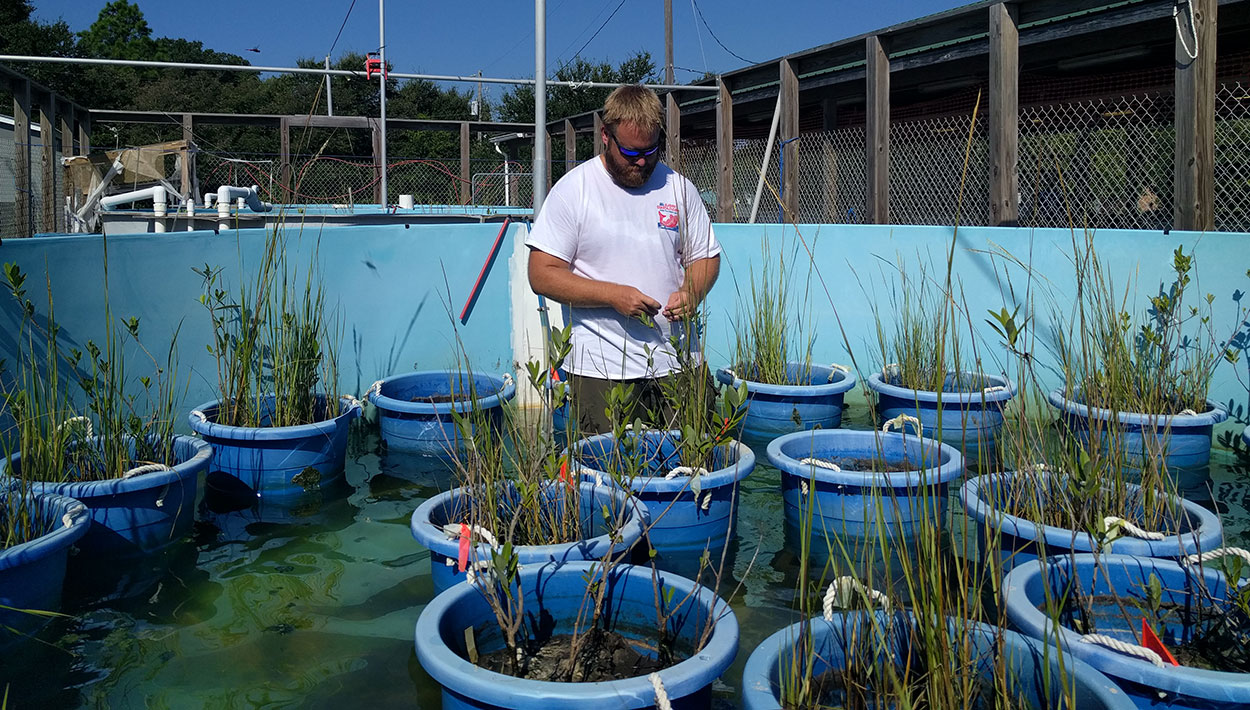
Scientists responded quickly in the wake of the 2010 Deepwater Horizon oil spill. However, research takes time. Passing the eight year anniversary of the spill, the Alabama Center for Ecological Resilience (ACER) added another piece to the puzzle.
ACER, led by scientists at the Dauphin Island Sea Lab, is one of 17 consortia funded by the Gulf of Mexico Research Initiative to understand the impact of the Deepwater Horizon disaster and to be prepared to respond to future events. ACER’s team focus is understanding how biodiversity influences ecosystem resilience, or its ability to resist and recover from disturbance, such as occurs in the aftermath of a large oil spill.
In late April, Ecosphere, an Ecological Society of America (ESA) open access journal, published a paper by seven ACER scientists titled “Effects of oil exposure, plant species composition, and plant genotypic diversity on salt marsh and mangrove assemblages.” The publication compares the resistance to and recovery from, oil pollution by salt marsh grasses and mangroves.
The results of the year-long outdoor mesocosm experiment showed that when grown together, the mangrove and the cordgrass were more resilient in recovering from the negative impacts of the spill. The oil negatively impacted both species above- and belowground, though the timing of the effects varied. The temperate cordgrass showed more immediate declines compared to the tropical black mangrove.
The publication concludes that, “Our results suggest that transition habitats in the northern Gulf of Mexico where A. germinans and S. alterniflora co‐occur will be negatively impacted by future oiling events, but that they are no more susceptible, and perhaps slightly less so, than habitats dominated by either individual species.”
This study focuses on one of the seven components covered by ACER’s research, and is the fourth publication from the ACER team.
To read more on ACER’s research visit, acer.disl.org.